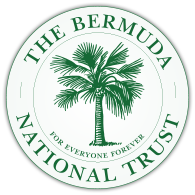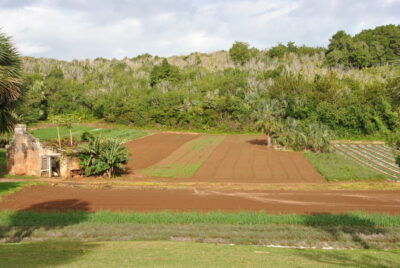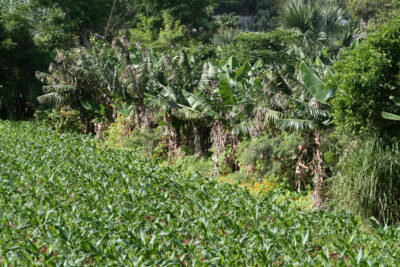Location: Mullet Bay Road, St. George’s
Nea Smith, a long-time supporter of the National Trust, gave half her interest in this 8 acre property to the Trust and with it came the proud farming tradition of her family. Her father Reeve Smith and uncle Howard Smith had originally farmed together in St. David’s, but they were relocated by the Government when the aiport was built. Howard was famous for the cultivation of Easter lilies, and is remembered as the man who developed the early – blooming Easter Lily that is named after him, Lillium howardii.
In 1941, Reeve Smith purchased Stokes Point Farm from the Government. Over the years, Stokes Point Farm has produced potatoes, onions, celery and Easter lilies for the New York market.
The property reaches the coastline on both sides, being bounded by a sizable mangrove swamp at Ferry Reach and by Mullet Bay on the other side. The neighbouring two acres were acquired in 1980 by the Bermuda Audubon Society, which excavated and landscaped Bartram’s Pond, opening the property as a nature reserve in 1985.

 Devondale is the largest of the old houses along South Road, Devonshire. This beautiful late 18th century Grade II listed house and 10 acres of woodland and farmland was transferred to the ownership of the Bermuda National Trust from the estate of Mrs Jean Cox Spence who died in June 2012.
Devondale is the largest of the old houses along South Road, Devonshire. This beautiful late 18th century Grade II listed house and 10 acres of woodland and farmland was transferred to the ownership of the Bermuda National Trust from the estate of Mrs Jean Cox Spence who died in June 2012. Adjoining Paget Marsh is a small cottage and farmland that has been farmed for more than 100 years. As well as arable fields, there is a banana patch and fruit trees. The land was purchased in 1965 by the Historical Monuments Trust, predecessor to the Bermuda National Trust, which already owned two parcels of land at Paget Marsh.
Adjoining Paget Marsh is a small cottage and farmland that has been farmed for more than 100 years. As well as arable fields, there is a banana patch and fruit trees. The land was purchased in 1965 by the Historical Monuments Trust, predecessor to the Bermuda National Trust, which already owned two parcels of land at Paget Marsh.